Occupational Safety Training at Textile and TMTC Supporting Industry Park
99,000 ₫
Note: The price above is calculated for one person and may vary depending on the number of trainees participating in the course and market fluctuations. For more accurate pricing information, please refer to the pricing table or contact our consultation staff directly.
Occupational safety is an important issue at the Textile and TMTC Supporting Industries industrial park and needs to be addressed promptly to ensure the health and safety of workers and enhance the reputation of businesses here. The Occupational Safety Training course is one of the effective solutions to raise awareness about how to prevent workplace accidents for workers in the Textile and TMTC Supporting Industries industrial park.
Table of Contents
Toggle1. Overview of Textile and TMTC Supporting Industry
a. History of the Formation of Textile and TMTC Supporting Industry
Textile and TMTC Supporting Industry in Tay Ninh is part of the province’s economic development process. Below is the history of the formation of the textile and TMTC supporting industry in Tay Ninh province:
- Early 2000s: Previously, Tay Ninh was mainly known as an agricultural province with abundant labor. With the goal of economic development, the Vietnamese government decided to focus on building industrial parks to attract foreign investment and create jobs for the local population.
- 2002: Tay Ninh provincial authorities decided to establish Trang Bang Industrial Park, located in Trang Bang commune, Trang Bang district, Tay Ninh. This industrial park was officially approved for the implementation of industrial projects.
- 2004: Trang Bang Industrial Park officially commenced operations. The park attracted many enterprises in the textile industry and TMTC supporting industry (Consulting, Environment, Payment, Technology Transfer) to invest and establish factories here. The presence of these enterprises contributed significantly to job creation and economic growth in the province.
- From 2004 to present: Trang Bang Industrial Park has continuously developed and expanded. Many enterprises in the textile industry and TMTC supporting industry have invested and expanded manufacturing activities here. The park has become an important center for textile and TMTC supporting industry in Tay Ninh, attracting substantial domestic and foreign investment.

b. Companies inside the Textile and TMTC Supporting Industry
Updating.
c. Economic Potential of the Textile and TMTC Supporting Industry
The Textile and TMTC Supporting Industry in Tay Ninh province have significant economic potential. Below are some highlights of the economic capacity of this industrial park:
- Concentration of the textile industry: The textile industrial park in Tay Ninh has attracted a large number of enterprises in the textile industry. Factories in this park operate on a large manufacturing scale and possess advanced technology. The concentration of the textile industry has created a linked value chain in the region, from fiber and fabric production to finished product processing. This has contributed to Tay Ninh’s economic growth and generated substantial income for the local community.
- TMTC Supporting Industry (Consulting, Environment, Payment, Technology Transfer): The park also focuses on enterprises in the TMTC supporting industry. These are companies that provide consulting services on management, environment, payment, and technology transfer to other enterprises in the area. The presence of TMTC supporting companies enhances competitiveness and improves manufacturing quality for enterprises within the industrial park.
- Job creation and business opportunities: The textile and TMTC supporting industry in Tay Ninh have created numerous jobs for local people. Factories and TMTC supporting companies employ local labor and provide stable income for workers. Additionally, a favorable business environment offers opportunities for local and international enterprises to expand activities and investment in the area.

d. Geographical Location of the Textile and TMTC Supporting Industry
View map: here
Location: Ben Cau district, Tay Ninh province
- By road: 20 km from Tay Ninh city
- By air: 70 km from Tan Son Nhat airport
- By sea port: 10 km from Thanh Phuoc port
Total area: 108 ha
2. Overview of Safety Training at the Textile and TMTC Supporting Industry
a. What is Occupational Safety Training?
- The occupational safety training in Tay Ninh is an in-depth training course on occupational safety for people working in industrial, construction, manufacturing, and high-risk professions. This training is organized by An Toan Nam Viet occupational safety training centers at the Textile and TMTC Supporting Industry.
- In this course, participants are provided with the knowledge and skills necessary to ensure safety for themselves and colleagues during work. Topics covered include legal regulations on occupational safety, identifying and assessing potential risks, methods for inspecting and maintaining safety equipment, first aid skills, and emergency response procedures.
- For enterprises, training employees in occupational safety not only enhances employee capability and work efficiency but also ensures compliance with labor safety laws and reduces the risk of work-related accidents during manufacturing and business operations.
REGISTER FOR OCCUPATIONAL SAFETY TRAINING SERVICE
b. Training Duration
Occupational safety training duration depends on several factors such as job type, industry, etc. However, the exact training duration for each group is regulated in Article 19 of Decree 44/2016/ND-CP
- Group 1: 16 hours
- Group 2: 48 hours
- Group 3: 24 hours
- Group 4: 16 hours
- Group 5: 16 hours
- Group 6: 4 hours
c. Training Content
Occupational safety training content includes the knowledge and skills necessary to minimize the risk of work accidents and ensure safety for employees and enterprise assets. Specifically, occupational safety training may include:
- Knowledge of occupational safety laws and regulations of the state and enterprises.
- Understanding hazards and types of occupational accidents in the work environment.
- Skills and methods for using personal protective equipment and collective protective devices.
- Methods to reduce the risk of work accidents and ensure safety during work.
- How to handle dangerous situations and organize rescue in case of work accidents.
- Knowledge about protecting the working environment.
Additionally, training content can be adjusted to suit specific industries and working conditions.
d. Occupational Safety Training Certificate
Occupational Safety and Hygiene Training Certificate
- The certificate template is described in detail in Form 08, Appendix II of Decree 44/2016/ND-CP and is issued for groups 1, 2, 5, 6.
- The certificate measures 13 cm x 19 cm, with a sky blue cover.

- The content on the front of the certificate is shown as above.
- The back of the certificate has a white background with content displayed as below.

- The occupational safety card template is described in detail in Form 06, Appendix II of Decree 44/2016/ND-CP.
- Workers in Group 3 are issued an occupational safety card (commonly referred to as Group 3 Occupational Safety Certificate).
- The card measures 60 mm x 90 mm, with front and back content displayed as shown below.

The employer can issue a Group 3 safety card to the trained employee after passing the assessment and having a labor contract between both parties.
- The record book for trained individuals in groups 1, 2, 5, 6 is described in detail in Form 09, Appendix II of Decree 44/2016/ND-CP.
- The record book for group 3 trained individuals is described in Form 10, Appendix II of Decree 44/2016/ND-CP.
- The record book for group 4 trained individuals is described in Form 11, Appendix II of Decree 44/2016/ND-CP.
- Group 4 is only issued a record book and does not receive a Group 4 Safety Certificate.
- The content in the group 4 record book is shown as below.

3. Employment Issues at the Textile and TMTC Supporting Industry
Employment at the Textile and TMTC Supporting Industry in Tay Ninh plays an important role in creating job opportunities for local and neighboring populations. Below is some information on employment issues in this industrial park:
- Significant job creation: The textile and TMTC supporting industry in Tay Ninh have generated a large number of jobs for both local workers and migrants from other regions. Factories in this industrial park require many workers to carry out manufacturing processes, including cutting, sewing, weaving, and finishing products. Additionally, TMTC supporting companies provide many opportunities in consulting, environment, payment, and technology transfer sectors.
- Diverse job levels: The industrial park offers a range of jobs from direct manufacturing labor such as sewing workers, cutters, and weavers to support positions like technicians, environmental staff, accountants, human resources, and management. This diversity provides substantial employment opportunities suitable for various skills and qualifications.
- Training and workforce development: Enterprises in the textile and TMTC supporting industry often invest in training and workforce development. They provide vocational training, skill development courses, and promotion opportunities for employees. This enhances workers’ expertise and creates career development opportunities in the industrial sector.

4. Main Causes of Workplace Accidents in Industrial Parks
The main causes of workplace accidents in industrial parks include:
- Failure to meet labor safety standards: Some industrial parks do not meet labor safety standards or do not provide sufficient personal protective equipment for workers.
- Insufficient employee training: Some workers are not fully trained in labor safety and do not know how to use personal protective equipment.
- Lack of safety equipment: Some industrial parks lack safety equipment such as stairs, railings, emergency exits, fire-fighting systems…
- Lack of supervision: Some industrial parks do not have a labor safety supervision team, or the supervision is not strict enough, and safety equipment and systems are not regularly inspected.
- Excessive working hours: Some workers have to work too long or do not get adequate rest, causing fatigue and leading to errors during work.
- Non-compliance with labor safety regulations: Some workers do not follow labor safety regulations or do not wear sufficient personal protective equipment, resulting in workplace accidents.
5. Measures to Control Workplace Accidents in Textile and Supporting TMTC Industrial Parks
Controlling workplace accidents in textile and supporting TMTC industrial parks is a crucial factor to protect workers’ health and safety. Below are some measures that industrial parks can implement to minimize workplace accidents:
- Compliance with legal regulations: Companies in industrial parks should fully comply with labor safety and environmental hygiene regulations. This includes establishing and implementing safe working procedures, providing protective equipment to workers, and ensuring proper use of tools and machinery.
- Training and raising awareness: Companies should organize periodic labor safety training for all employees. This helps increase awareness of potential hazards and how to prevent accidents. At the same time, it provides knowledge and skills to handle emergency situations and provide first aid if an accident occurs.
- Inspection and maintenance of equipment: Companies need to regularly inspect and maintain equipment and machinery during manufacturing. This ensures that equipment operates stably and safely, reducing the risk of accidents caused by equipment failure.
- Supervision and addressing potential hazards: To ensure a safe working environment, there must be a process to monitor and detect potential hazards. Companies should conduct regular inspections, risk assessments, and implement corrective measures to minimize the risk of accidents.
- Periodically conduct workplace environment monitoring in factories, collect and analyze harmful factors for workers, then adjust to reduce hazards to prevent occupational diseases.
6. Benefits of Labor Safety Training
An Toan Nam Viet provides your company with the following excellent benefits upon completing labor safety training courses in accordance with Decree 44/2016/ND-CP on labor safety and hygiene for companies, factories, and enterprises:
- Workers can identify potential hazards of workplace accidents and take preventive measures to avoid them.
- Your company can establish risk prevention measures in manufacturing, operation, and maintenance processes.
- Minimizes costs when safety risks occur in the workplace.
- Uninterrupted manufacturing processes help increase labor productivity and product quality.
- Complying with labor safety laws reduces legal risks.
- Enhances credibility and professionalism in all aspects, thereby elevating the company’s brand.
An Toan Nam Viet training courses are a solution to prevent external factors from affecting individuals, allowing them to avoid dangers that could lead to injury or even death.
REGISTER FOR LABOR SAFETY TRAINING SERVICE
7. Customer Feedback After Completing Training Courses
An Toan Nam Viet has many years of experience accompanying businesses in Vietnam in general and in southern provinces in particular. This responsibility is extremely valuable to An Toan Nam Viet, which is why our Labor Safety Training work is increasingly professional. Our growth is driven by positive feedback and suggestions from our business partners. Below are the testimonials from partners we have served.
Bac Nam E&C Investment and Construction Joint Stock Company
“The first time using An Toan Nam Viet’s service, I was impressed by the 24/7 support from the consulting team. The class organization was very fast and convenient for our company. Thank you very much, Nam Viet!”
Hoa Dat Construction and Trading Joint Stock Company
“Nam Viet’s service has greatly helped us simplify labor safety and complete safety documentation for work processes. The consulting team is enthusiastic and timely with our inquiries. 5 stars for Nam Viet.”
See more customer interviews after using An Toan Nam Viet’s services
8. Labor Safety Training Capability of An Toan Nam Viet
An Toan Nam Viet is a reputable and quality labor safety training center in Vietnam. Training sessions are continuously held at factories, manufacturing sites, or construction sites nationwide (63 provinces in Vietnam).
REGISTER FOR LABOR SAFETY TRAINING SERVICE
Labor Safety Training License
- An Toan Nam Viet has been inspected and certified by the Safety Department of the Ministry of Labor – Invalids and Social Affairs to meet the conditions for labor safety training. This further strengthens our capability in labor safety training.

Materials and Lectures
- Before labor safety training materials are used in occupational safety courses, they are reviewed and approved to ensure lectures are accurate and effective.
- Instructors’ teaching methods follow the standard of An Toan Nam Viet, developed by experts in labor safety and hygiene training to maximize knowledge absorption for trainees.
Facilities
- Controlling classroom factors affecting training improves teaching efficiency and knowledge retention.
- Our training support facilities always provide spacious classrooms meeting standards for area, lighting, training equipment, etc.
9. Nationally Reputable and Quality Labor Safety Training Center
At An Toan Nam Viet, we prioritize professionalism in labor safety training. For us, imparting knowledge to workers to protect themselves is a contribution to nation-building.
To ensure effective training, we meticulously prepare every detail, from tools, teaching equipment, curriculum, materials, sound, and lighting.
Our labor safety instructors are experts with many years of experience and have conducted studies identifying hazards across industries and prevention methods.
Lectures are practical, engaging, and easy to understand, allowing workers to comfortably absorb knowledge. All content strictly follows Decree 44/2016/ND-CP.
Consequently, workers learn hazard prevention measures and self-protection, applying them appropriately in real work situations.
Our training center proudly provides reputable and professional labor safety training with the following advantages:
- Competitive training costs with guaranteed quality.
- Flexible training schedules according to company manufacturing needs.
- Fast certification procedures complying with legal regulations.
- Experienced and professional instructors.
- Controlled classrooms improve teaching efficiency and knowledge absorption.
- Lectures tailored to labor safety in enterprises.
- An Toan Nam Viet works dedicatedly and professionally to provide precise and fast support for clients.

10. Additional Labor Safety Training Resources
1 review for Occupational Safety Training at Textile and TMTC Supporting Industry Park
No comments yet

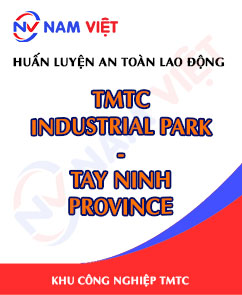
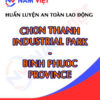
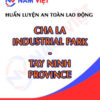



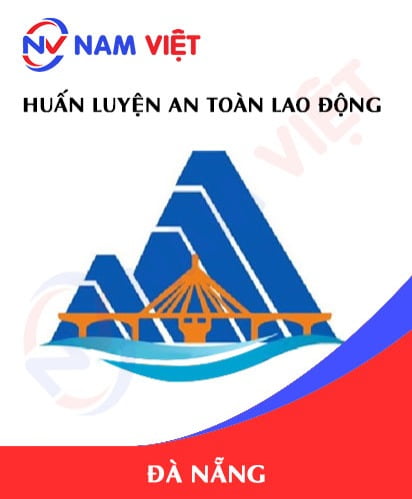
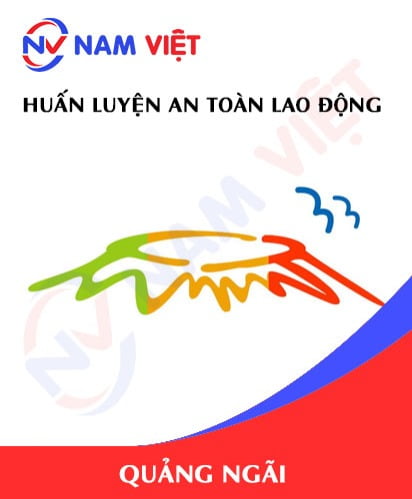
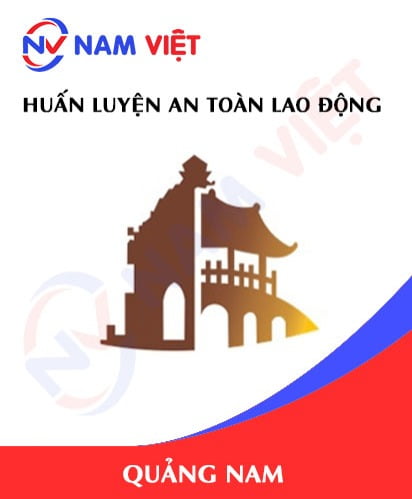
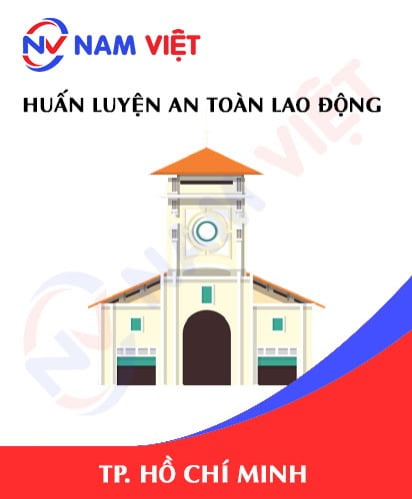

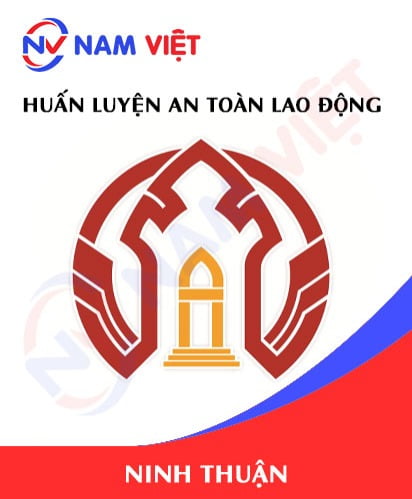
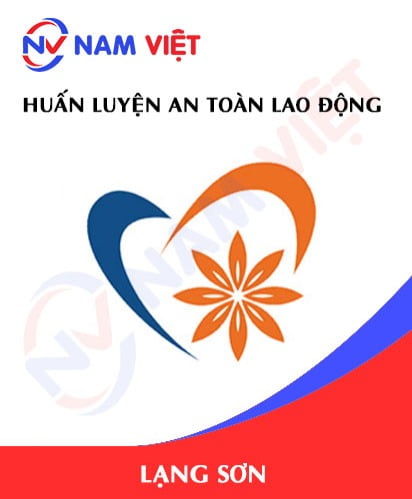

namchinh.haiphong341
Giảng viên dạy rất sinh động dễ hiểu!